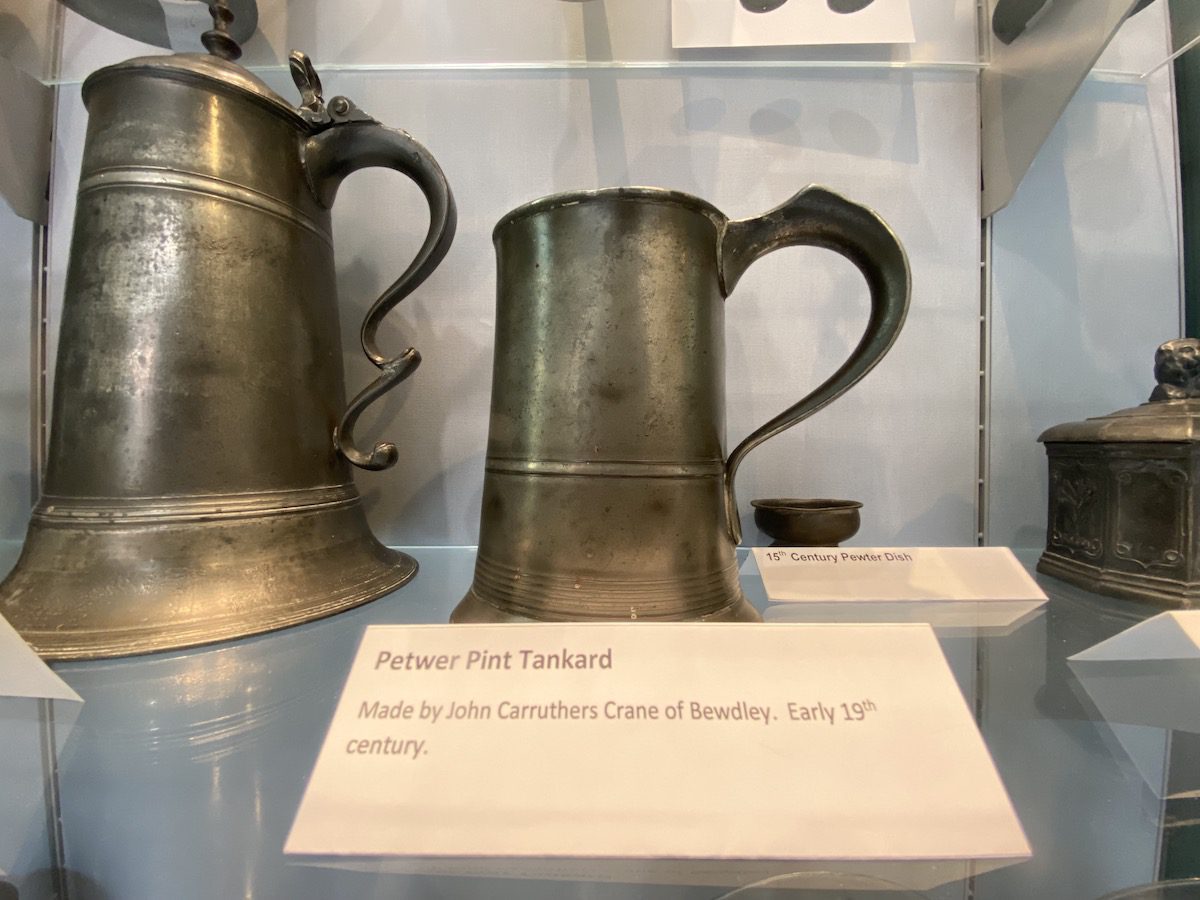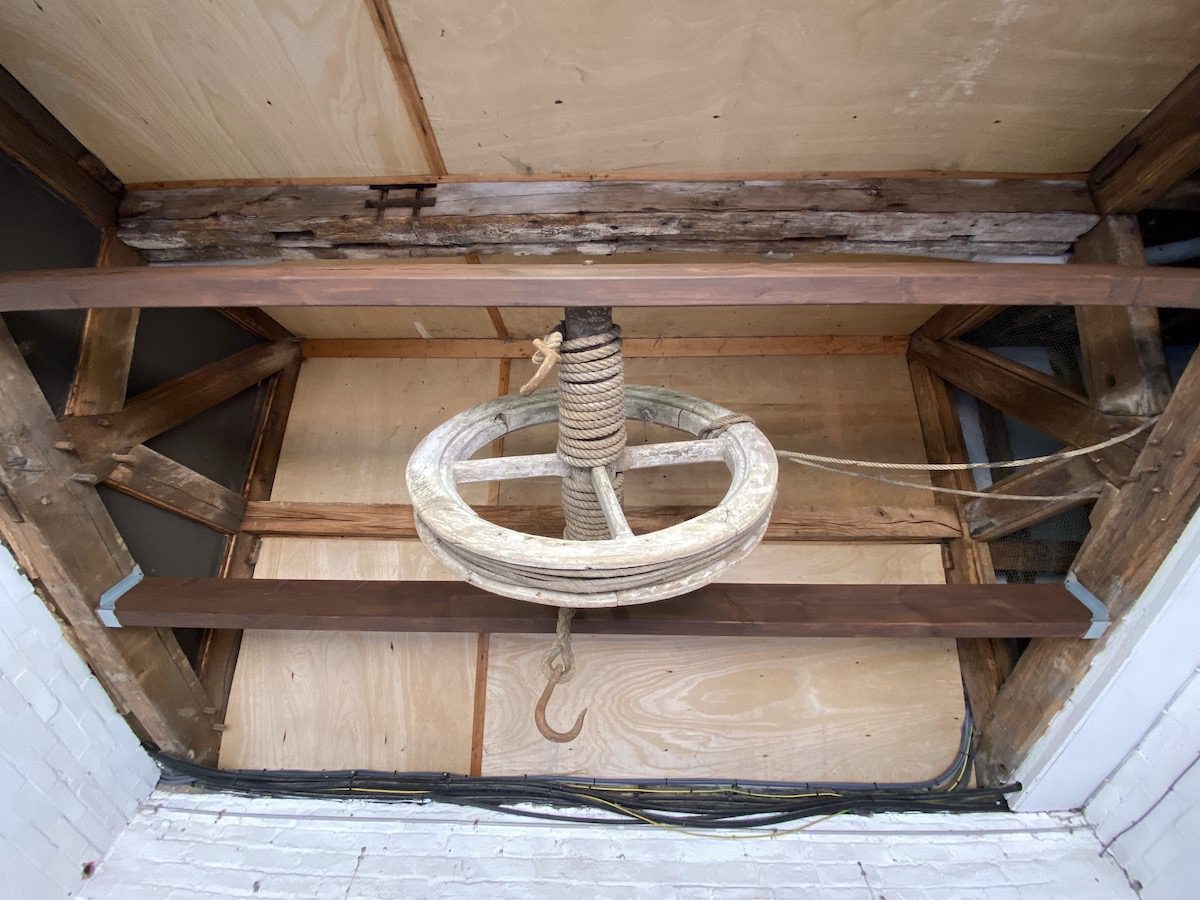Bewdley Museum
Bewdley Museum is a free historical experience that exhibits the many industries of Bewdley, a delightful riverside Georgian town. This is one of our favourite industrial heritage attractions and it makes a great day out leaving time to explore the town and beyond.

Key info
| Location | 13 Load St, Bewdley, DY12 2AE |
| County | Worcestershire |
| Opened | 1973 |
| Maintained by | Wyre Forest District Council |
Visiting guide
Café
Toilets
Gift shop
What can I expect when visiting Bewdley Museum?
There is a lot to see at Bewdley Museum; however, we are only going to cover industrial heritage exhibitions in this visiting guide.
Head through the front door past the gift shop to the main corridor. This was Bewdley’s shambles where livestock was slaughtered and prepared for sale.

The first exhibition on your right details the history of Bewdley covering its former heritage as a centre of manufacturing with pewter. Production finished in the 1830s when it could no longer compete with cheaper pottery, brass, and copper being produced by the factories of Birmingham and Staffordshire.

There is a display of items from Stanley Baldwin’s connection with Bewdley. He was born in Bewdley and became Prime Minister of the UK three times. Our favourite item in the collection would have to be this silver desk blotter containing an intricate engraving of Stourport Power Station.

Head back to the main corridor, there is an exhibit opposite that details the timber, coal mining, and charcoal production industries that once existed in the Wyre Forest nearby. We are very fond of the coal tub that was used in the Hunthouse Colliery near Mamble.

Continue round to the exhibition of Lowe’s Rope and Twine, a Bewdley roper established in 1801. They were a main supplier to Kidderminster’s carpet manufacturers and their trade became global in the late 1800s. The business closed in 1972.

Head back to the corridor and continue down. On the right is an exhibit detailing the original purpose of the museum buildings, butchery. Notice the carcass hoist above.

Continue along the corridor, on the left is an original pilaster from Bewdley Bridge. Opened in 1798, the stonework weathered over the years. This pilaster was salvaged from the repair work carried out in 2013.

Further on the left is a Newsham Water Engine, a fire extinguisher pump patented in 1712 and used until the early 19th century. The pump consisted of an open trough, which was filled with water using buckets. Two pistons attached to a handle squeezed water out of a spout.

Next to the water engine is Bewdley’s fire bell, manufactured circa 1880. It hung from the old bell chamber of St Anne’s Church, where the fire engines were kept until 2021.

Continue down the main corridor and you will come across the original carved stones that once adorned Bewdley Bridge removed when it was strengthened during World War Two to accommodate tanks and other heavy vehicles. The stones were carved by master mason John Simpson from Shrewsbury. The left stone displays the coat of arms of Shropshire, the right displays Bewdley’s coat of arms.

At the end of the corridor, turn right and head round the back of the garden to see an original bomb shelter constructed for the post office workers of Bewdley during World War Two. The shelter is usually open to visitors.

Next to the bomb shelter in a small hut is a water wheel that powers a pump. It was originally built by the local industrialist Joseph Tangye to supply water to his home at Tickenhill Manor. Joseph was one of five brothers who founded James Tangye and Brother, a renowned manufacturer of machines and engines based in Birmingham.

Follow the path around the edge of the garden towards a row of workshops. The first workshop contains a coin operated 1924 Tangye 10 hp oil engine, which now powers a lathe using electricity.
Continue down the side alley to the next building, which is the old brass foundry. Bewdley’s brass industry was founded in 1697 before moving to the foundry you now see. It operated until 1964.

Head into packing room through the door at the far end. Past the packing room is the foundry office containing many original items, this is probably one of the most fascinating areas of the museum.

This is where we end our online tour, but don’t be fooled, there is so much more to see at the museum, including the hidden garden at the back that leads inconspicuously past the many historic buildings of Bewdley. Although the museum is free, we recommend leaving a donation to ensure it continues operating for many years to come.
How long does it take to see Bewdley Museum?
You will require at least 2 hours to see all the exhibitions and gardens at the back.
Is Bewdley Museum suitable for a picnic?
You could have a picnic in the gardens at the back, which has many benches. There is also a café if you prefer to grab a bite.
How do I get to Bewdley Museum?
Bewdley has a heritage railway station with limited services throughout the year. The line connects to the national rail network at Kidderminster.
Bewley has ample car parking off Load Street and Dog Lane. There are also bus services to and from Kidderminster.
History of Bewdley Museum
1885 – The idea of a museum in Bewdley had originally been proposed by John Ruskin, a celebrated Victorian writer, art critic and conservationist.
1969 – The Bewdley Museum Trust is officially formed to deliver the concept of creating a living folk museum.
1971 – Restoration work starts on the shambles mainly by volunteers. The site was owned by Bewdley Borough Council and had been derelict for some time.
1972 – Bewdley Museum is officially opened by Earl Baldwin of Bewdley on 1st July. It was celebrated by the untying of the last rope made by John Lowes ropewalk. On the 13th July, the museum was visited by Princess Alexandra as part of her town visit to celebrate the 500th anniversary of the charter granted by Edward IV.
1975 – The brass foundry was bought with the help of a donation from the Guild of St George, a charitable trust founded by John Ruskin in the 1870s.
1987 – The saw yard exhibition is constructed.
1991 – The Quale Gallery is opened.
1996 – The tourist information centre is opened.
2022 – The museum celebrates its 50th anniversary.
Sources
All historical content sourced from museum information boards.

 Teme Aqueduct
Teme Aqueduct